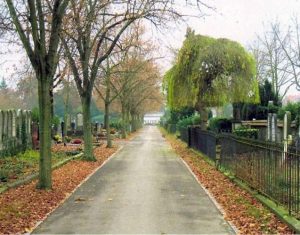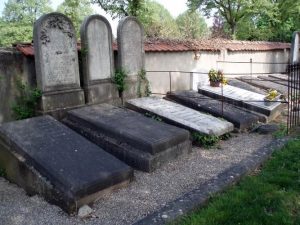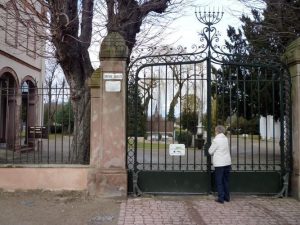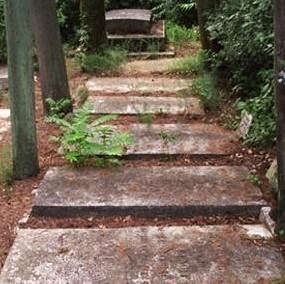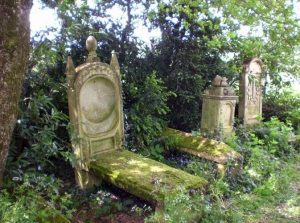The old cemetery
The first cemetery in Mulhouse was to the south of Saint Etienne Church built in the 12th century – tradition assigns its building to Frederick Barbarossa. In 1559, it was closed and moved behind the Franciscan convent. In 1805, in accordance with the Empire’s sanitary regulations, it was moved outside the city, near the Basel Tower, on the grounds of the present Salvator Park. Today the park is in the centre of Mulhouse.
The new cemetery
The cemetery presently in use was inaugurated in 1872. It spreads over 12 hectares and the work began in 1869 under architect Jean-Baptiste Schacre (1808-1876). He also directed the restoration work at the Synagogue in Dornach, at the Catholic Saint Etienne Church, at the Saint Etienne Protestant temple, and the building of the Kœchlin School. He also designed the railway line between Strasbourg and Basel with the adjoining stations. In the new cemetery the architect designed three sectors, one for each community – Catholic, Jewish and Protestant- with ornamented gates, each featuring a meaningful symbol.
The cemetery in Mulhouse is an exceptional composition: slabs from the old cemetery were transferred which initiated its restrained design: trees were planted along the wide alleys and some railings feature neoclassic adornments showing poppies and overturned flames. Some tombs recall the memory of important people in the industrial development in the 18th and 19th centuries; for instance, the creators of the first railway line Mulhouse-Thann, Jacques and Nicolas Kœchlin, or the first President of the Industrial Society of Mulhouse Isaac Schlumberger, or the inventor of textile machinery Emile Huber, whose tomb was designed by the sculptor Bartholdi.
The cemetery constitutes a reserve of stone-engraved archives that should be preserved. But, as the descendants of Mulhousian families are either missing or geographically distant, the ‘perpetual tombs’ are not well maintained, encouraging the city authorities to re recover the land. The ‘Mémoire Mulhousienne’ association founded in 1994 tries to prevent such decisions.
Bibliographical reference: histoire de Mulhouse by Ernest Meininger, town archivist.

